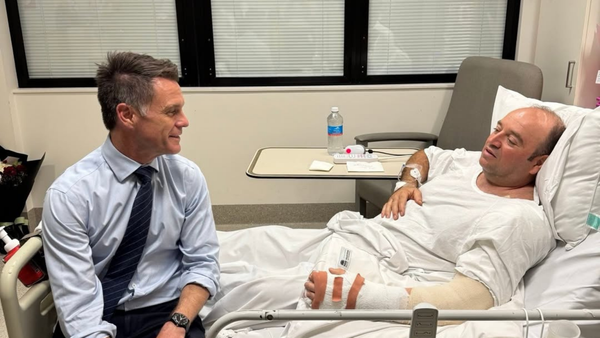
Oaktree Capital Management LP co-founder Howard Marks is sounding a cautionary note on today’s market, drawing parallels to the late 1990s tech boom while offering investors a roadmap for navigating what he believes are the early stages of another bubble.
Speaking on Bloomberg Television on Aug. 20, the legendary investor painted a picture of a market where stocks have become “expensive relative to fundamentals or reality,” driven by psychological forces where investors increasingly “like stocks too much.” But unlike many market bears, Marks isn’t hitting the panic button just yet.
Don't Miss:
- Would You Have Invested in eBay or Uber Early? The Same Backers Are Betting on This Vacation Home Platform
- They Sold Their Last Real Estate Company for Nearly $1B — Now They're Building the Future of U.S. Industrial Growth
“We’re in the early days of a bubble,” Marks explained, comparing the current environment to around 1997, when markets were “falling in love with tech stocks” without concern for valuations—a period that preceded former Federal Reserve Chair Alan Greenspan’s famous “irrational exuberance” warning. However, Marks emphasized a crucial distinction: “We are currently in the early days and not yet at nutty valuation levels, so I’m not ringing the alarm bells for an immediate correction.”
The Real Concern Isn’t Just Big Tech
While Magnificent Seven tech giants like Amazon Inc. (NASDAQ:AMZN) and Alphabet Inc. (NASDAQ:GOOGL, GOOG)) grab headlines with their outsized market gains and lofty valuations, Marks finds something more troubling lurking beneath the surface.
“What’s more alarming is that high valuations are being applied to more average companies”—the other 493 stocks in the S&P 500—”rather than just exceptional companies,” Marks noted. While acknowledging the Magnificent Seven as “great companies” whose valuations he cannot definitively call “excessive,” the broader market’s embrace of rich multiples across ordinary businesses signals a more concerning shift in investor psychology.
This widespread valuation expansion reflects what Marks identifies as the biggest mistake investors make, concluding that “the way things are today is the way it’ll always be.” This mindset, he argues, ignores the more probable “reversion to the mean” and has been fostered by the absence of a serious market correction in 16 years.
Trending: An EA Co-Founder Shapes This VC Backed Marketplace—Now You Can Invest in Gaming's Next Big Platform
A Strategic Shift Toward Credit
Rather than advocating for a complete exit from risk assets, Marks suggests a more nuanced approach. “It’s a time for some caution. Put a little more defense into your portfolio,” said Marks.
His preferred defensive strategy? A shift toward credit markets. “Investing in credit as opposed to equities is one way to achieve this,” Marks explained, highlighting credit’s inherent defensive characteristics compared to stocks.
Credit offers what equities cannot: “a promise of payment and a contractual rate of return," noted Marks. Even with tight credit spreads, Marks argues that “a contractual guarantee approaching returns in the sixes over the next 10 years is more defensive than being in the stock market at these elevated valuations.”
The math is compelling from a risk-adjusted perspective. Credit has a “high probability of doing fine,” while stocks at current valuations face a “reasonable probability of doing less than fine.”
See Also: Kevin O'Leary Says Real Estate's Been a Smart Bet for 200 Years — This Platform Lets Anyone Tap Into It
America Still Leads, But the Gap Is Narrowing
Despite his cautions, Marks remains fundamentally bullish on America’s long-term prospects. He still considers the U.S. the “best place in the world to invest,” citing the nation’s “spirit of innovation, free markets, rule of law, capital markets, growth, dynamism, and great companies.”
However, he acknowledges a subtle shift: the U.S. may be “a little less best than we used to be.” This creates opportunities for discerning investors willing to trade some quality for better prices, as they can find “less good assets in other parts of the world at cheaper prices.”
Marks closed his analysis with a quote from philosopher John Stuart Mill that encapsulates his investment philosophy: “He who knows only his own side of the case knows little of that.” By understanding both bull and bear cases, investors can make more informed decisions about navigating these uncertain waters.
For investors heeding Marks’ advice, the message is clear: maintain exposure to quality assets while building defensive positions through credit investments—a strategy designed to weather whatever storm may come while still participating in continued market growth.
Read Next: From Chipotle to Red Bull, Top Brands Are Already Building With Modern Mill's Tree-Free Wood Alternative — Here's How You Can Invest Too
Image: Shutterstock







